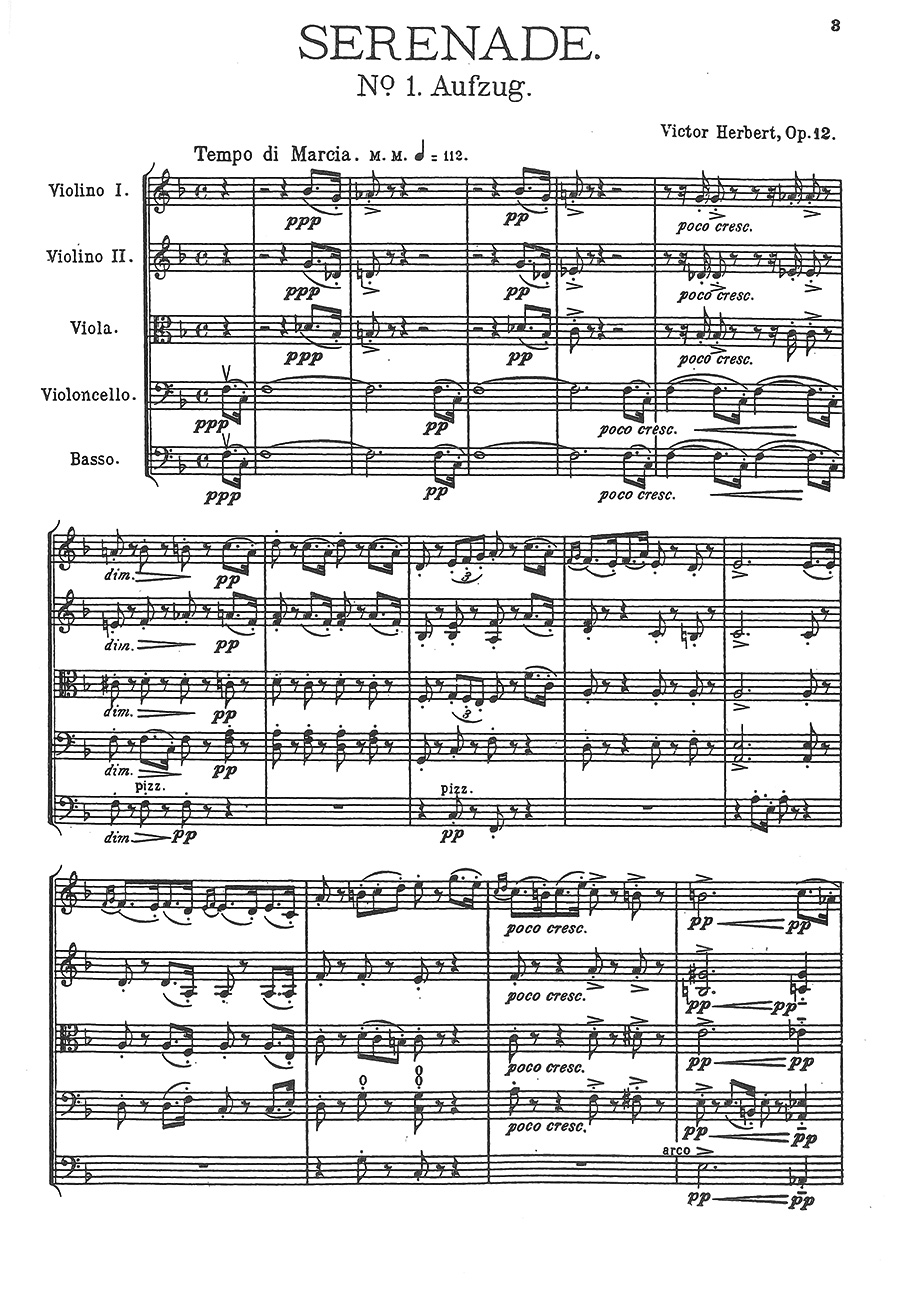Serenade for String Orchestra Op. 12
Herbert, Victor
19,00 €
Preface
Victor (August) Herbert – Serenade for String Orchestra, op. 12 (1888)
(b. Dublin, 1 February 1859 – d. New York, 26 May 1924)
Preface
Best known today for his operettas, Victor Herbert’s contemporary reputation for instrumental composition rests prima- rily on his Second Cello Concerto, op. 30 (1894) with its Lisztian thematic transformation. However, by the time the newlywed Herbert immigrated to the United States with his wife, Therese, in 1886 to support her engagement with the Metropolitan Opera, he had already established himself as a cellist/composer of merit with the premieres of his Suite for Cello, op. 3 and Cello Concerto No. 1, op. 8 – both premiered in 1882.
Shortly after settling in New York, the Irish expatriate had entrenched himself in the musical scene as a featured soloist, cellist of the New York String Quartet, assistant conductor to Anton Seidl, and faculty member at the National Conserva- tory of Music. The Serenade for Strings soon premiered under Herbert’s direction in Steinway Hall as one of three novel- ties on the program for 1 December 1888. Nestled between Vincent d’Indy’s Wallenstein Trilogy and Peter Cornelius’ overture to the Barber of Bagdad, the serenade earned praise from the audience with a hearty ovation. While the New York Times critic evaluated the work was of uneven merit, he recognized “an agreeable talent.” Published in 1889, Herbert and others would conduct the work and excerpts across the nation with consistent enthusiastic praise from audiences over the next several years.
The New York Times called the centerpiece love scene “a particularly good piece of writing, being warm in theme and forceful in expression, and showing the results of careful study of Wagner’s wonderful treatment of strings.” The opening harmonies convey a passion that leads to a melody with hints of Impressionism. Critic Henry Edward Krehbiel called for Herbert to extract the movement for full orchestra because it developed “an intensity of feeling which, though eloquently expressed by the voices of the quintet, deserves a larger and more telling apparatus.” Despite its use as a standalone in concert settings, Herbert would only ever extract the fourth movement, Canzonetta, for a violin and piano arrangement in 1928.
Herbert’s Serenade explores an array of techniques and well-crafted Romantic contrasts in dynamics, textures, timbres, and harmonies throughout its five movements. His work with string quartet surely impacted his writing and use of ex- tended techniques. Staccato harmonies, pizzicato passages, and harmonics color the supporting cello and bass in the march, Polish dance, and Finale. Divisi strings effect textural changes with subtle expansions and contractions, and the wide range of dynamics offer not only a subtle dynamic subjectivity but also a liberal sprinkling of sforzando and even sforzato.
The republication of this score brings back what the Daily Inter Ocean deemed a “dainty delicate composition, full of fine
color, replete in artistic contrasts, with crescendos almost Wagnerian in their swing.”
Gary Galván, 2014
For performance material please contact Musikproduktion Höflich (www.musikmph.de), Munich.
Score Data
| Edition | Repertoire Explorer |
|---|---|
| Genre | String Orchestra |
| Pages | 52 |
| Size | 210 x 297 mm |
| Printing | Reprint |
